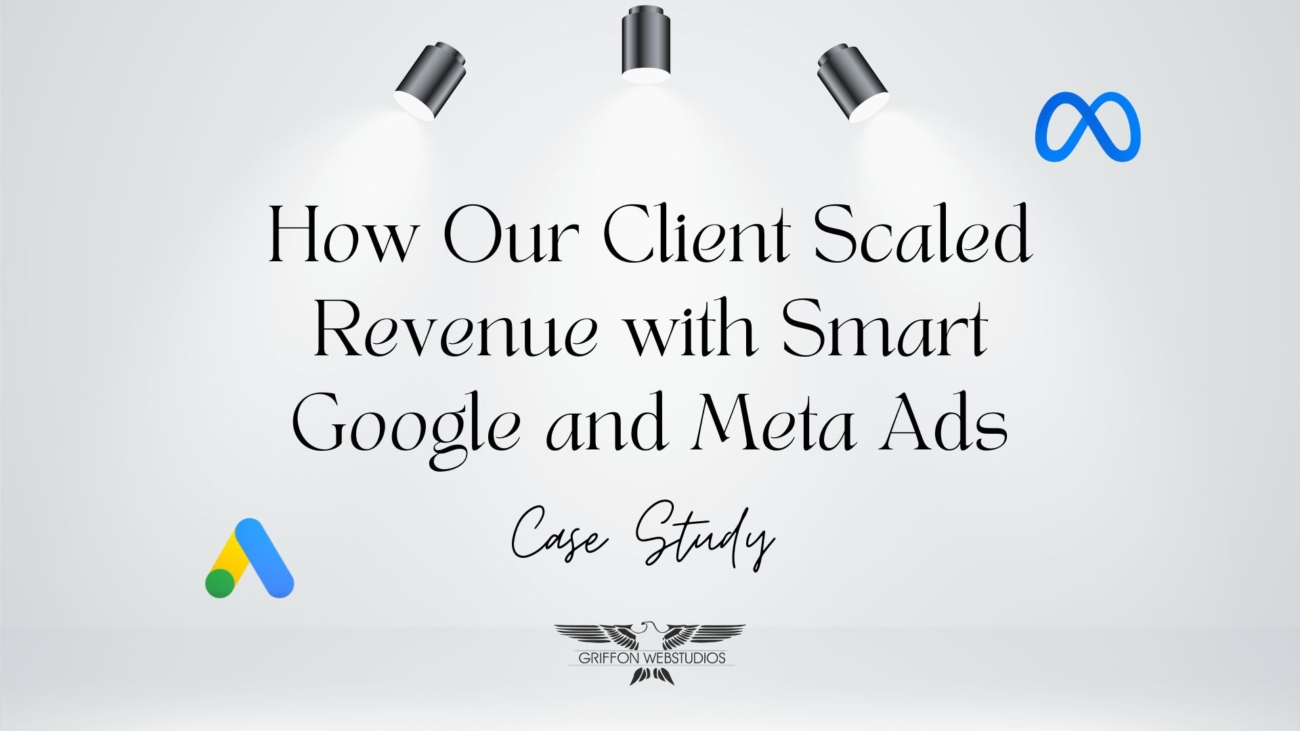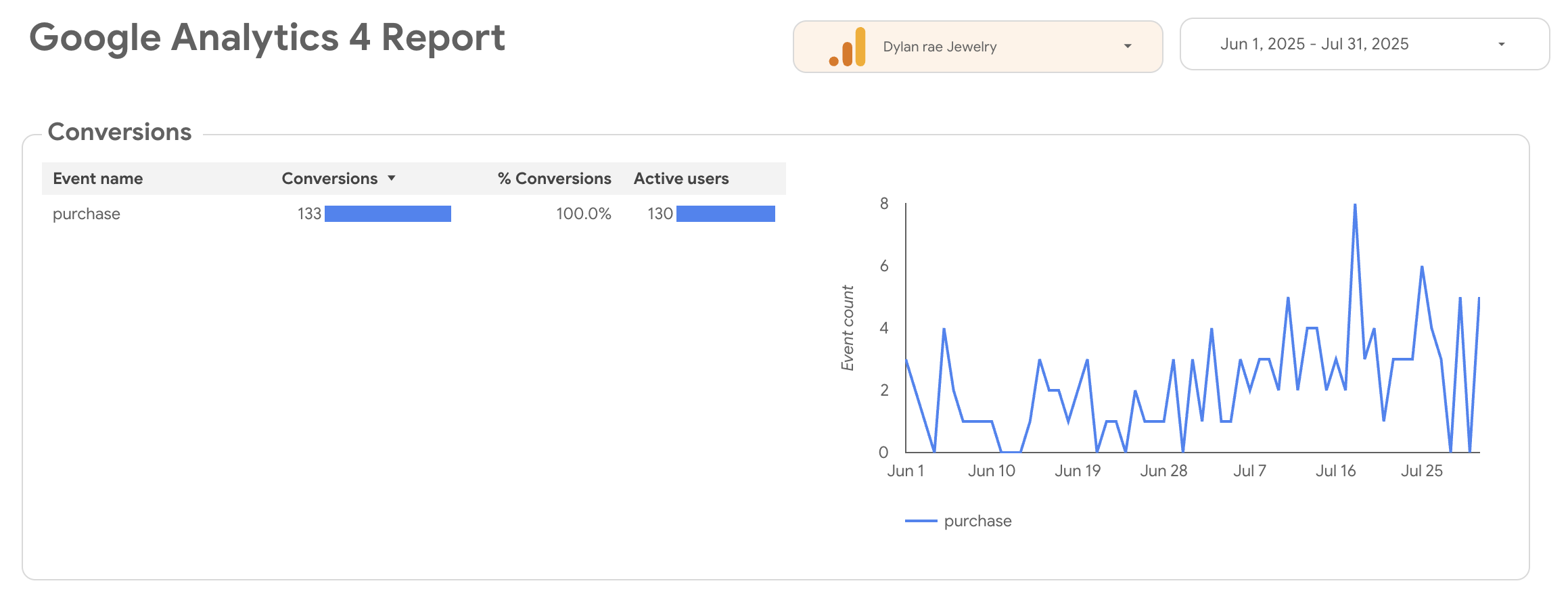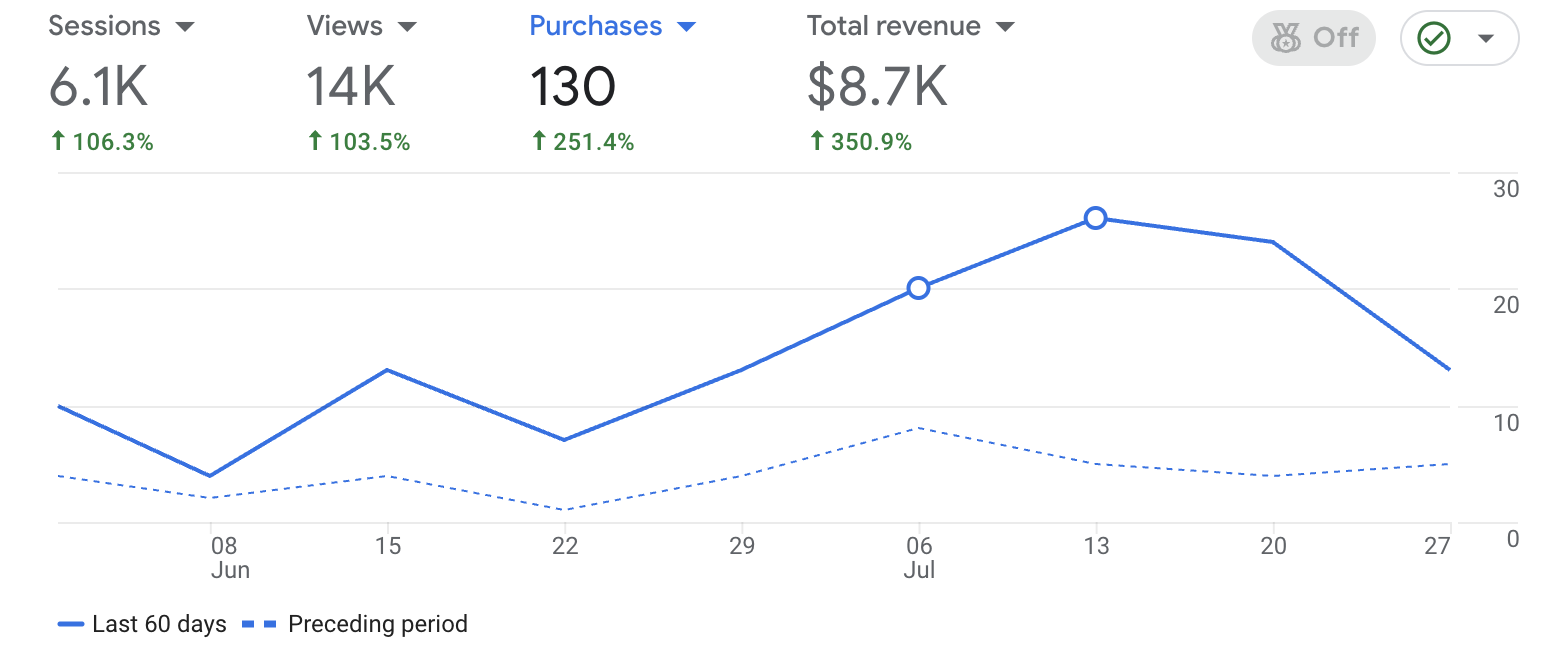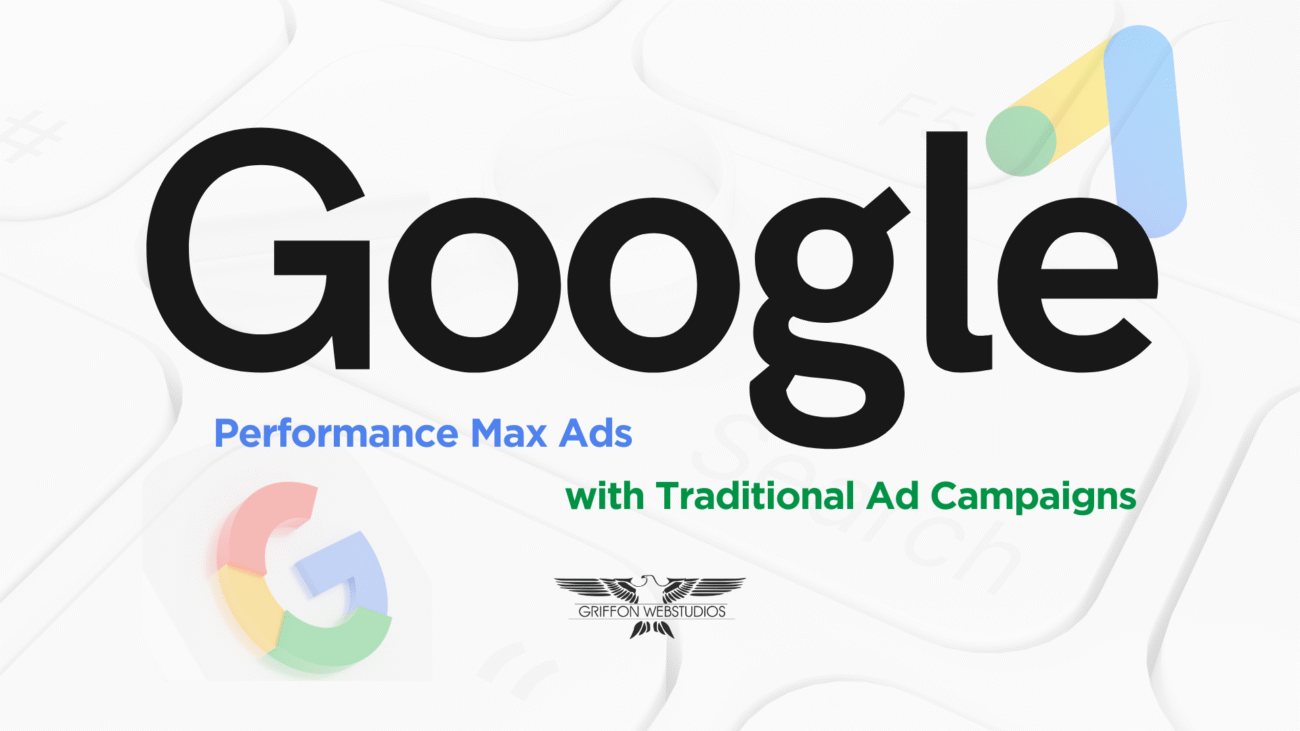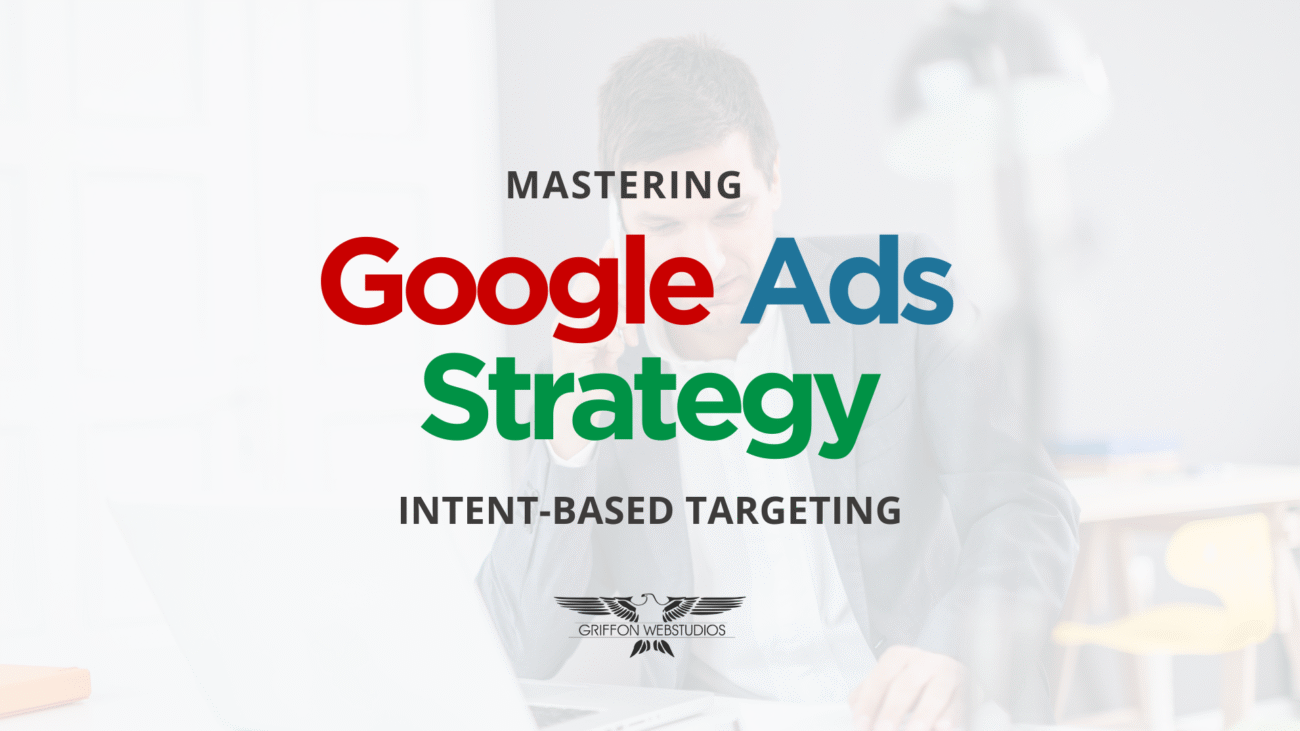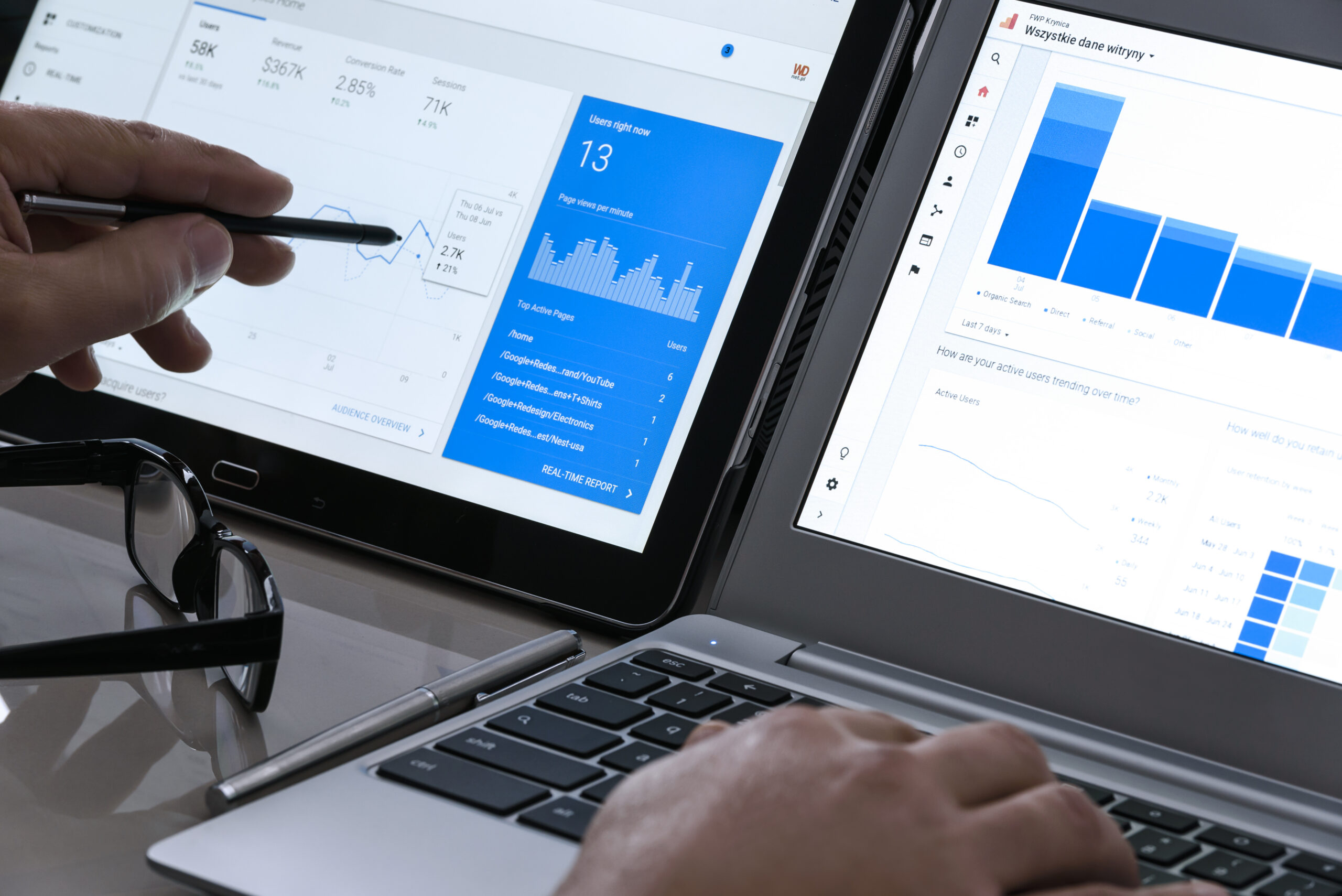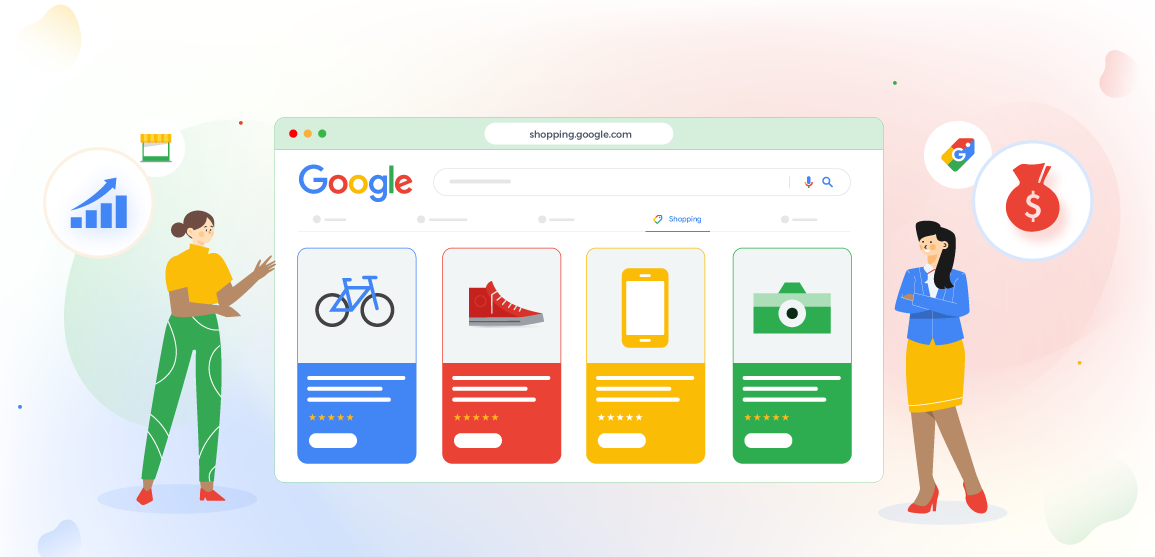Dylan Rae Jewelry has always had a great product. The designs resonate. The brand has appeal. But earlier this year, their paid ads weren’t keeping up. Despite getting traffic, the conversions weren’t where they needed to be and the return on ad spend (ROAS) wasn’t justifying the budget. That’s when we stepped in to reshape their entire advertising strategy.
Dylan Rae Jewelry isn’t just another boutique brand; they’ve mastered the art of everyday luxury. Their pieces strike the perfect balance between timeless elegance and bold individuality, making dylanraejewelry.com a go-to destination for women who want jewelry that speaks their style, not just trends.
What followed was a sharp turnaround: more clicks, lower costs, and a big lift in purchases. This is a look behind the curtain at how our strategy transformed the brand’s paid ads into a serious sales machine.
The Problem: Wasted Clicks and Stagnant ROAS
At the start of the campaign, Dylan Rae was running ads but the returns were flat. Clicks were coming in, but not translating into purchases. ROAS hovered in the “meh” zone, and there was no clear funnel structure in place. Ad dollars were being spent, but not working hard enough. Our job was to change that quickly and efficiently.
The Strategy: Funnel Clarity, Creative Testing, and Smarter Targeting
We built a two-platform strategy using Meta (Facebook and Instagram) for discovery and retargeting, and Google Ads for high-intent capture. But it wasn’t just about running more ads. We redesigned the entire structure around three key principles:
- Focus on Purchase-Driven Metrics: No more optimizing for link clicks or reach. We went straight to purchase objectives with tROAS and target CPA campaigns.
- Creative Variation: We tested video and image ads across different audiences to identify what grabbed attention and converted best.
- Audience Intelligence: Using lookalike audiences (LALs) based on purchases and add-to-cart behavior, we began narrowing in on the people most likely to buy.
We also launched a Google Performance Max (PMax) campaign with a target ROAS of 300%, leveraging dynamic creative and intent-based channels like YouTube, Shopping, and Gmail to reach shoppers throughout the funnel.
What the Numbers Say: A Campaign in Motion
The results speak for themselves. Here’s what happened over the course of the month.
-
- Clicks doubled from 592 to 1,190.
- Impressions more than doubled from 40K to 85.7K.
- Cost per conversion dropped from $42.40 to just $20.16, a 52.5% improvement.
- Total conversions hit 130 overall purchasers.
- Average CPC dropped by 18.3%, saving more money per visitor.
Even though CTR dropped slightly (from 1.46% to 1.38%), it was expected with impression scaling. We were reaching a much larger audience, and still converting better than before.
On the Google side, our branded search campaigns crushed it driving 7 conversions at only $1.77 per sale with a quality score of 9. This wasn’t traffic for the sake of traffic, it was high-intent, purchase-ready users.
On Meta, over just 7 days of video ad testing, we generated 3 sales and a ROAS of 2.02. Across the entire 30-day cycle, both video and image ads hovered around a consistent ROAS between 1.34 and 1.44, giving us a solid foundation for scaling.
We didn’t stop there. Our bottom-of-funnel Meta campaign was optimized not for clicks, but for purchases with tROAS and CPA bidding doing the heavy lifting. This shifted the focus entirely to outcomes, not activity.
Device Optimization: The Mobile Majority
One key insight? Mobile was king.
78% of all conversions came from mobile users. That told us everything we needed to know about our future creative and landing page design make it mobile-first or don’t bother. The cost per mobile conversion was also the lowest across all device types, further proving where our budget belonged.
The Turnaround: From Spending to Scaling
So what’s the final verdict? Let’s get to what matters. Here’s what we achieved over the last 60 days:
-
- Sessions: 6,100 (↑ 106.3%)
- Views: 14,000 (↑ 103.5%)
- Purchases: 130 (↑ 251.4%)
- Revenue: $8,700 (↑ 350.9%)
For context: the preceding period barely crossed 40 purchases. We more than tripled that.
-
- ROAS climbed sharply across both platforms
- Revenue increased
- CPC dropped
- Conversions rose
- Efficiency improved in every key metric
But more than numbers, there’s a story here, about strategy, execution, and clarity. This wasn’t magic. It was structure. We gave the campaign a clear funnel, tested the right creatives, chased real conversions, and stopped wasting money on clicks that didn’t matter.
The growth I’ve seen in both ad performance and brand visibility has been game-changing.– Danielle Ambrosio, Owner and Designer at Dylan Rae Jewelry
How Griffon Webstudios Can Help You Soar
At Griffon Webstudios, we don’t just run ads. We build revenue engines. Our approach combines data, creativity, and relentless testing to craft ad strategies that actually convert. Whether it’s Google, Meta, or a full-funnel system tailored to your brand, we focus on the metrics that matter like ROAS, conversions, and growth.
We help businesses go from guesswork to clarity, scaling campaigns that bring real, measurable returns. If you’re ready to turn clicks into customers and budgets into breakthroughs, we’re the team that makes it happen.

